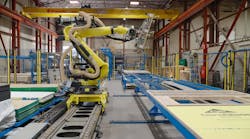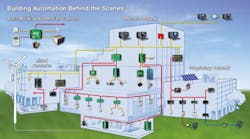Why do so many systems and projects fail to achieve or maintain their desired level of performance? I find it’s rarely big issues that are missed or misconstrued that lead to such shortcomings. Rather it seems much more often to be what one would likely consider an inattention to smaller details that are necessary for the systems involved to operate efficiently and effectively for years.
An example; recently a relatively new system not meeting its energy performance goals was found to have its flexible connections on the air intake duct connections to its air handlers cut open. Why? It was found that this was the only way the filter change contractor could pull the filter sections for replacement. No one is sure who did the cutting. The filter contractor was blamed, but the real culprits are the designer and the installing contractor — neither of whom concerned themselves with how filters would be changed. If they had, it would have been easy to install inspection hatches in the inlet ducts for that purpose. The result of this neglect was years of inefficient and improper operation as air was short circuited back to the air handlers through these cuts.
Such little things are usually much less apparent when the omission is within a system’s controls. Today, designers provide only the most rudimentary control narrative, normally called the sequence of operations. Nearly all the details are left to the control contractor to decide and implement. This is a very important part of any project that has almost no support or accountability beyond the desire of the controls contractor to do a good job. Issues such as how to handle equipment failures when redundant equipment exists, lead-lag determinations, maintenance shutdowns, automatic and manual set-point control, and nearly every aspect of how operators connect with and manage the system through controls are usually left to the controls contractor.
For such contractors the focus has traditionally been on getting the big picture items right; making certain lockouts prevent boilers and chillers from operating without flow, getting the right systems to start and stop in the proper sequence and at the proper conditions, and coordinating the operation of the various components so all work together correctly when needed. These fundamental control elements are often reasonably well covered and tested in control systems. Too often, it’s the little details that get lost. And as in the filter change problem, most of these “little” control issues that, over time, will determine whether or not a system operates effectively.
My solution is direct communication with the system’s operation’s staff. The submittal process is usually not effective for this purpose because it is primarily a dialog with the engineer who usually is not very interested in these topics. I recommend controls contractors put together a document that will incorporate complete descriptions of how the “little things” in the system controls will be accomplished through the controls platform. If a controls narrative or control description is required as part of the submittal, this document can fit that purpose as well, but then it needs to be distributed to and discussed directly with the operations staff.
Control contractors should already have standard methods of dealing with the items that operators will need to use to keep the system operating smoothly. These should be kept ready to be cut-and-pasted into each controls narrative as required. The various features should be well described and should accurately depict how the operator manages each. Once the operations staff has had time to review this document, it should be presented and discussed in person with a focus on the operator interface strategy, including a description and discussion of each interface item and how the operations staff is expected to manage it. Be sure the description of each item is accurate.
For example, various controls systems have certain strengths and weaknesses relating to scheduling, lead-lag sequencing, and many other features necessary for operators to manage their system. This is not a sales talk, but a working session, so be clear as to why you plan to do things as you have outlined. Don’t hesitate to describe controls limitations, pitfalls and other potential problems you see in the process. Also, be very open to operator suggestions. Some operators have vast experience and their advice can be helpful to ensuring your success.
Getting the little things right in our projects is a big issue. Overcoming the hurdles to do so require the controls contractor to truly partner with the operations staff – and that means reaching out to them during the chaotic process of construction and startup. While there are always lots of reasons we can think up not to do so, a successful project is difficult to achieve without it.
I invite your thoughts, comments, and good ideas about this article. Please contact me at [email protected]













